
rider69
-
Content Count
644 -
Joined
-
Last visited
Posts posted by rider69
-
-
least buried person 3 about 1 meter down most buried person 3 meters. The reports will come out on the JAN website at some point let them piece it together. It did release on a faceted layer that was quite hard that report is out there on JAN.
-
The reports are starting to come online for this accicent. I helped call in the Helicopter for a friend that was a first responder. I can only asume what happened but I dont truly know so I wont go into it.
It was a stressfull time that day as the first phone call I got was from Evergreen Outdor Center saying that my best friend involved in some sort of Avalanche. I cant stress enough how gutted I was for
a few seconds. I quickly called him and he picked up. He informed me that there was a very big avlanche and people are buried. That he didnt know how many but please get me a helicopter. ACT and
Evergreen were contacted again and got the right people to the area but it was too late. A sad start to season.
-
Karasawa is as good as it is made out to be. How you get there though is not fun.I took my twins to Iwatake Happo and 47 yesterday ill put up a report tomorrow.
-
best time of the year to just hike something for great shots muika.
-
anything is better than meetings.
Off to ski iwatake happo and Goryu with the kids today but I wish I couldve have hiked for sure.
-
Fought the wind yesterday to get up to Mumezawa got to ski some spring powder in the chutes good first day off of work!
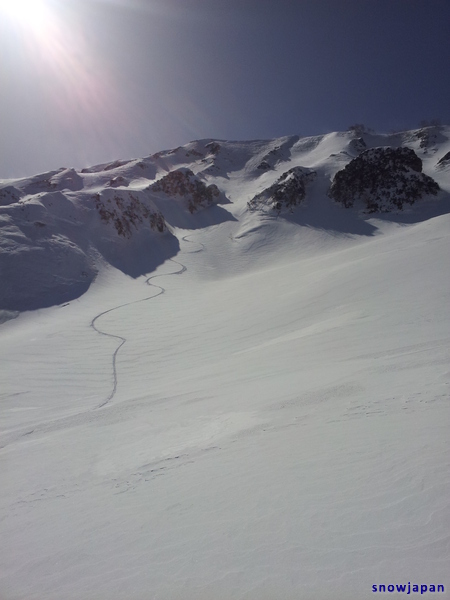
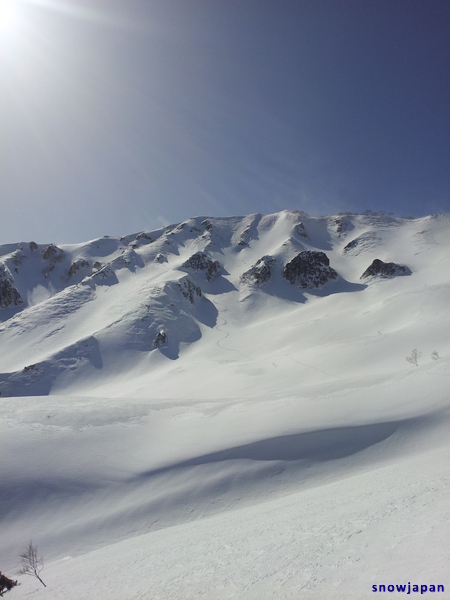
Couldnt re-climb up with the wind and clouds coming on so skied down to kuzuresawa.
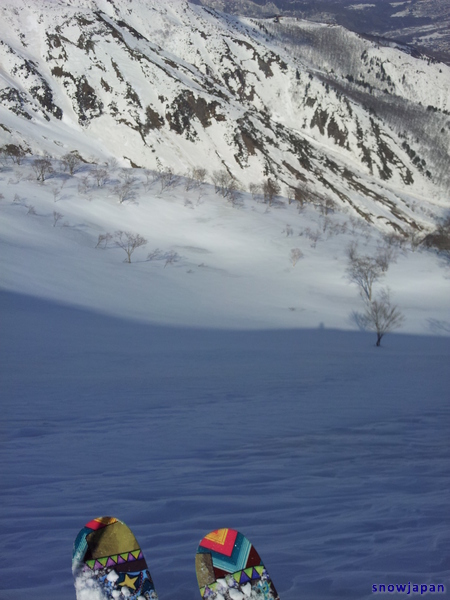
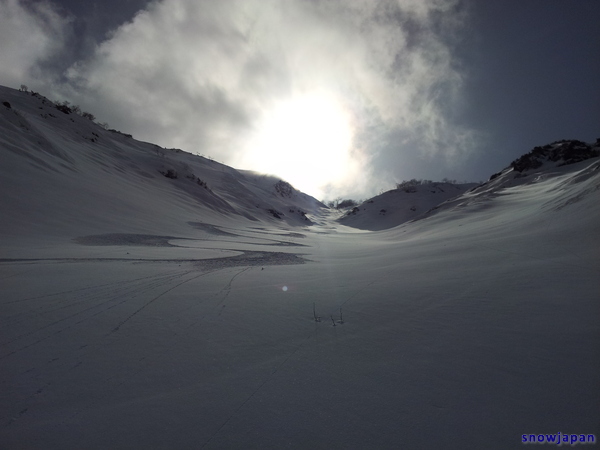
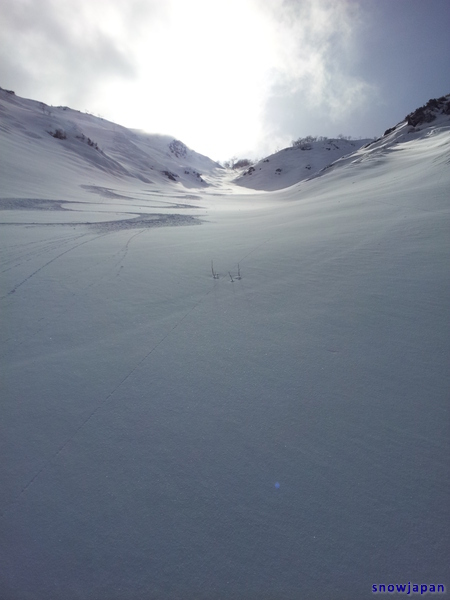
1300 vertical meters of pow equals a good day.
-
Not much can be done about the pictures with a smart phone
-
tons left like 3 months or more skiing is more than just one condition.
-
Behind Happone south and north
-
Run 2 was Mumezawa proper. Great packed powder the whole way. Fear the wind hammered areas.
Cant believe the wind this year. Was quite happy that my school had a sports day on the only day it
wasnt windy in 10 days.
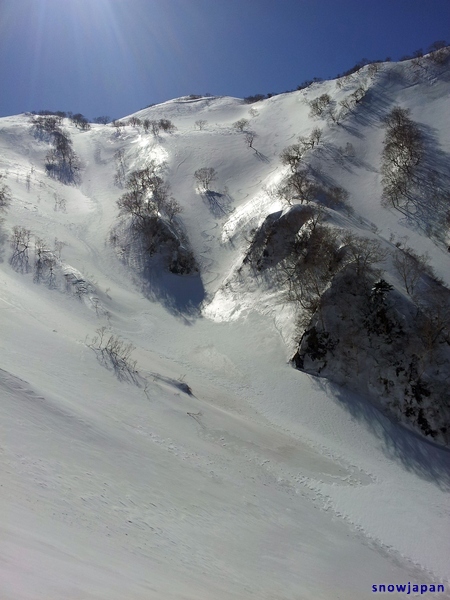
Run 3 was down Oshidashi awesome packed powder so easy to ski but didint take a picture because I had to traverse away.
Run 4 the lower triangle best corn of the day really easy to play and slash.
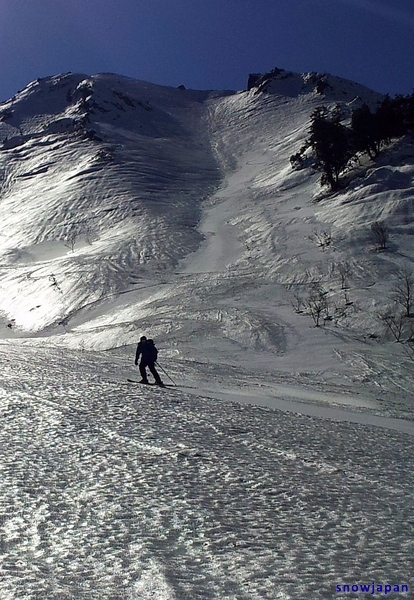
-
That time of the year to get some solid lines with some effort.
1000 vertical meters climbed link 4 solid lines together over 4 hours.
very burned forehead opps!
Run 1
South mumezawa area nice chute that only appears every so often.

-
He was wearing a beacon but was alone
-
where did you score that deal?
-
Really the best way to make riding friends is to kind of stick to one area.
-
Bad news glide cracks can be very dangerous. They can form at any time really.
-
Here is a cut and past from a blog on TGR it is a very important read about what is happening with the modern beacons.
If Sj says ok I would like to provide a link to the site because it has videos of what is going on. Play safe out there.
Not my article.
The International Snow Science Workshop (ISSW) is held every two years in a major mountain region of the world. It is regarded by snow science professionals as a top conference, bringing researchers and practitioners together to report on experiments, exchange theory and share their experiences in the field to better understand the science of snow.
This past fall, ISSW took place in Anchorage, Alaska, where John Barkhausen, a student at Alaska Pacific University, discussed his findings after organizing a field study to test the theory of electrical interference and avalanche transceivers. The topic has been discussed in many snowcentric circles across the globe for several years. However, a recent YouTube video posted by Stuart Pitches is arguably what has brought the topic into the households of a majority of everyday snow folks.
The video clearly shows that when a GoPro camera is on and in close proximity to a searching avalanche transceiver it can cause interference. The GoPro can facilitate false signal readings, which ultimately may negatively impact the searchers attempt to locate a buried avalanche victim. With so many people using GoPro’s and other helmet cameras while also utilizing avalanche transceivers in the field, it’s obvious there are reasons for concern. The range of interference has been identified as variable depending on model, but the bottom line is that these cameras do influence the working mechanics of avalanche transceivers.
What John Barkhausen discussed at ISSW was not solely related to helmet cameras, but electronics as a whole. Not only are skiers and riders who employ the use of avalanche transceivers increasingly using helmet cameras, they also tend to carry radios, cell phones, GPS devices, other types of cameras or an iPod. Simplistically, the answer to if electronics influence transceiver function is yes. However, the real question is to what degree? Even if helmet cameras were deemed unsafe for use do to the manner that they influence avalanche transceiver function, many backcountry experts support to use of cell phones in the field, as they can provide a necessary point of contact to initiate rescue efforts.
At ISSW Barkhausen placed several electronic devices including a RFID tag (Alyeska lift ticket), Spot emergency locator, cell phone, iPod, radio, digital camera, and GPS unit in the near vicinity of a searching avalanche transceiver to measure the effects. He tested for how the transceiver would be influenced in terms of a searching pattern as well as its receiving range. He used three different transceivers including a Pieps DSP, Barryvox Pulse, and BCA Tracker DTS.
Ultimately, Barkhausen found that none of these electronic devices produced negative impacts on a transmitting beacon. That was big news, as some outfits had initially thought the use of, say, a GoPro or even having a digital camera in ones pack might throw off the ability of a transceiver to function as it’s been designed. He also found that no particular brand of transceiver was more or less affected than the other.
However, Barkhausen did find that within a range of 17 inches, electronic devices will alter the ability for a transceiver to search for a signal properly. Above 17 inches, interference is minimal, but within that distance, problems are persistent. This is also evident in the video shared by Pitches. The safest way to insure you will not alter your transceiver’s ability to function properly when in search mode is to do what you are taught in an Avi I course — keep your transceiver at arm’s length when in search mode. That way, you should be at least 17 inches away from any electronic interference. The International Commission on Alpine Rescue is reportedly considering that the 17 inches be replaced by about 2 feet (24 inches) for all electronics to ensure a safe distance is met by all users. It’s also important to think about turning your electronic devices off entirely when in avalanche terrain.
As you can see in Picthes video, when your avalanche transceiver is being altered by electrical interference, you will either see erratic numbers or false triggers on your display window and/or overall range will be lost. You might also get false distance readings as well as wrong directions to follow when attempting to search. Even if you don’t have a purely analog transceiver, you will still get so much interference that instead of improper numbers and directions the beeps you are supposed to listen to and follow while searching will be filled with static and thus rendered inaudible.
Clearly, more study is needed to be able to provide full conclusive data regarding different brands and products that represent the most risk for users. According to Barkhausen’s work, iPod’s and GPS units seem to create the most interference of all the electronic devices, although from Picthes video GoPro’s don’t seem to be too far off in terms of potential negative impacts. I’m sure more study and conversation on the subject will be forth coming in the weeks/months ahead so we can all better understand the issue as a whole.
Barkhausen is scheduled to follow up this years presentation at the 2014 ISSW in Banff, Canada, but in the meantime, take home points in the now are to make sure you always perform a transceiver search at arm’s length. If you’re on a snowmobile, get off it to perform a search, so as to not allow any electronics (spark plugs) or noise to influence your search. Also, think about turning your electronic devices off and stowing them away from you transceiver when you are spending time in avalanche terrain.
-
If you love it then dont let money stop you. budget and save. I know people with old splits if you want some information.
-
Sorry but Cat skiing isnt meant to be for all people. It is priced high for a reason. A good used Cat will be 100000 dollars. Reapairs are not cheap.
The experience is limited to certain numbers a day to save the snow. at 6500 yen a pop they were using the Cat more like a lift than a shuttle bus
for a small group.
-
i know people that spend 20 to 30 k a season on either helis or cats. They want that type of skiing and service.
-
No one will do it super cheap it is hard to do a good job at it and still make money.
-
Cat Sking was once cheap it isnt anymore. Youll never be taken to the goods on a one day tour if the guide doesnt know you.
-
As mike said only time will tell but 6500 was way too cheap Cats are expensive both to buy and maintain.
35000 seems about the norm for cat sking. Your first day in a cat and you wont hit any really great slopes.
The guides will not trust your word at all. So for a one day cat I think it isnt priced badly.
-
Takasu snow park
Dynaland
wings
All close for renting a car would work easy too.
-
I have taken more Avi courses than I care to remember. Most likely im one of the most experienced on this forum have been
skiing Backcountry since 1996.
You write so much I not going to waste my time reading something that long. I gave up after 30 secs.
Im done Ive made my points. You dont have the education or knowledge to post which rope is ok to duck.

Big avalanche at Tateyama
in Snow talk, trip reports, Japan avalanche & backcountry
Posted
The thinking now is that they were climbing and a cornice broke and took the group down.